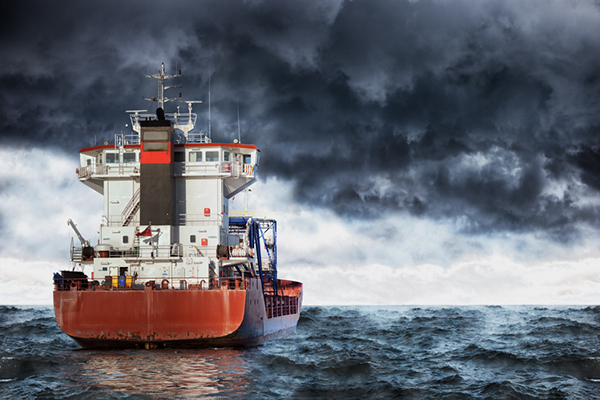Resilinc's newly released 2018 EventWatch Report reveals that not only have global risks increased overall, but volatile and uncertain geopolitical conflicts—including the U.S.-China trade conflicts and Brexit—pose some of the most potentially costly and disruptive supply chain impacts.
This is the ninth year Resilinc has conducted the research, and some of the findings came as a surprise.
“Supply chain, sourcing, and procurement professionals are on the front lines of managing global trade risks for their companies,” said Bindiya Vakil, Resilinc CEO. “2018 challenged them in new ways, and 2019 is shaping up to present continued uncertainty as long-standing trade relationships are reconfigured.
“Along with Brexit and the U.S.-China trade conflicts, organizations have to anticipate how other major changes in trade relationships could affect their procurement strategies—from NAFTA 2.0 to the Comprehensive and Progressive Agreement for Trans-Pacific Partnership (CPTPP), which already spans a trading bloc of about 500 million people and may soon expand to include more countries,” said Vakil. “There's also the new EU-Japan trade agreement to evaluate and the UK's bilateral negotiations with the U.S., Japan and other countries. As our team has been recommending for years, a key strategy to manage such highly fluid situations is scenario planning and preparation.
Throughout the year, Resilinc EventWatch issued a total of 2,629 event alerts—more than seven per day, on average, and an increase of 36% year over year. Of these, the firm classified 907 events as those impacting its customers' mapped supplier sites, and therefore requiring an impact assessment. Across the globe, Resilinc's event data showed that 21,152 suppliers and 58,191 supplier sites producing 552,950 parts across multiple tiers in the supply chain were potentially affected during 2018.
One critically important insight emerging from the 2018 EventWatch data points to potential vulnerabilities in a significant percentage of global supply chains. Data showed that 66% of the sites flagged as potentially impacted by a supply chain event were manufacturers; and of these, only 12% had identified an alternate manufacturing site to meet customer needs in the event of disruption to the primary manufacturing site.
“With the global supply chain so fraught with uncertainty and instability, supply chain professionals should be examining where sole-source manufacturing suppliers make their supply chains vulnerable and how they can work with suppliers to identify and qualify alternate manufacturing sites,” said Vakil. “This is just one example of the opportunities to reduce risks of disruption and improve the overall resiliency of the supply chain systems that are at the heart of companies' performance and profitability.”
EventWatch data for 2018 also captured a 640% increase year-on-year in Regulatory Change events and a 370% increase in Protest/Riot events. While some of the increase in both event categories can be attributed to a refinement in Resilinc's criteria, the dramatic growth of these types of events clearly speaks to growing political turmoil globally.
To be sure, there were plenty of more immediately disruptive events in 2018. The top five most significant events were all natural disasters: four extreme weather events and the February 2018 Taiwan Earthquake. In combination, these natural disasters impacted more than 24,000 supplier sites with an average time to recovery of between 19 and 25 weeks.
In an interview with SCMR, Vakil noted that supply chain managers are still on “a multi-year journey,” reaching various maturity models at different stages of the game.
“At the same time, companies must ensure that new risk managers are up to speed with the technological tools being offered,” she say. “Most of them cannot afford too much risk exposure during that learning curve.”
Shahzaib.Khan, Resilinc's director of operations, added that the worst thing a company can do is wait.
“Given the urgency of risk issues, we have onboarded four new industries, comprising aerospace, food & beverage, consumer goods, and furnishing,” he said. “We see more growth ahead as awareness broadens.”
The five types of events that occurred most frequently in 2018 were:
- Mergers & Acquisitions;
- Factory Fires/Explosions;
- Reorganization/Management Change;
- Business Sale or Spin-off;
- Factory Shutdown/Disruption.
Highlighted datapoints from the report:
- Resilinc EventWatch issued 2,696 event notices for a 36% increase year over year which averages about seven per day. Of these, Resilinc classified 907 events as those impacting its customers' mapped supplier sites, and therefore requiring an impact assessment.
- Illustrating that many global supply chains may not be adequately prepared when adverse impacts do occur, Resilinc's data showed that of the 12,558 manufacturing supplier sites that were in the zones of impact of potentially disruptive events, only 12% had an alternate manufacturing site available. In Life Sciences, only 4% had an alternate site available; in Food & Beverage, 3%; and in Aerospace & Defense, 0.4%.
- Reflecting the geopolitical turmoil of 2018, Regulatory Change events grew by 640%, while Protests/Riots increased 370%.
- The top 5 most reported events were: Mergers & Acquisitions; Factory Fire/Explosion; Reorganization/Management Change; Business Sale or Spinoff; and Factory/Shutdown Disruption.
- Changes in ownership, management or business structure (reflected in the event types: Mergers & Acquisitions; Reorganization/Management Change; and Business Sale or Spinoff) accounted for 30% of 2018 events. Such events often have impacts that do not manifest immediately but can eventually lead to serious disruptions and even a total loss of supply as strategic decisions are made around exiting non-core business lines or selling business units.
- 2018's top 5 most destructive natural disasters were: the January North American Blizzard (also known as the bomb cyclone); Taiwan's 6.4-magnitude earthquake in February; Hurricanes Florence (U.S.) and Typhoon Mangkut (Philippines, Taiwan, China), which both occurred in September; and October's Hurricane Michael in the U.S.
SC
MR


Latest Supply Chain News
Latest Podcast

 Explore
Explore
Business Management News
- U.S.-bound containerized import shipments are up in June and first half of 2024
- Expand supply chain metrics to cover the complete customer experience
- When disaster strikes, the supply chain becomes the key to life
- Leadership development for supply chain leaders
- A smarter approach to sustainability is vital for healthy, resilient supply chains
- When the scales tilt: Making vaccine access work for all
- More Business Management
Latest Business Management Resources

Subscribe

Supply Chain Management Review delivers the best industry content.

Editors’ Picks





